Hollywood Hills Amphitheater Capacity and Seating Unveiled
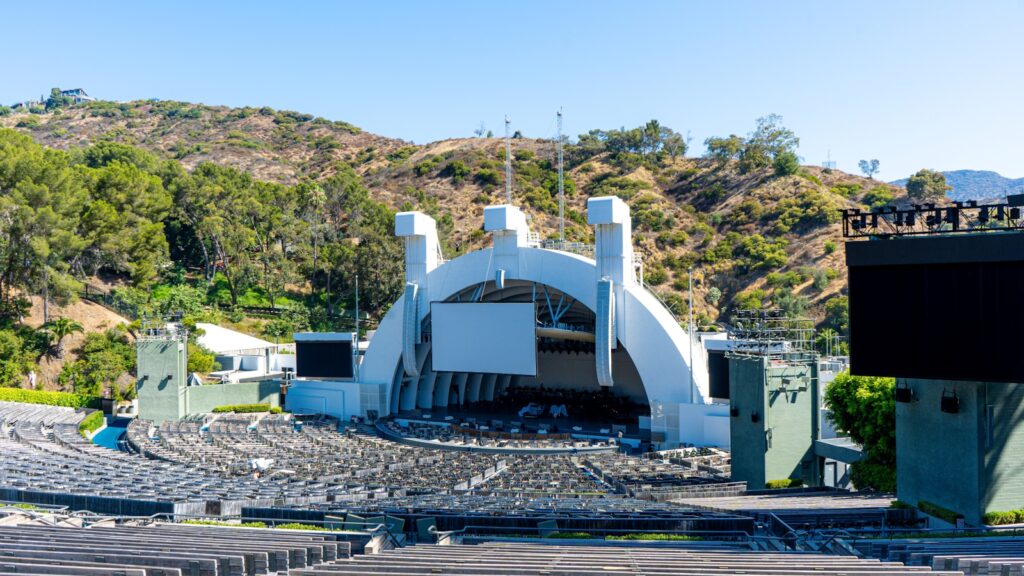 Are you planning to attend a show at the Hollywood Hills Amphitheater or considering it as a venue for your next event? Understanding the Hollywood Hills Amphitheater capacity and layout of this iconic venue is crucial for making the most of your experience. As someone who’s spent countless nights under the stars at this magical amphitheater, I’m here to guide you through everything you need to know about its seating arrangements and capacity.
Are you planning to attend a show at the Hollywood Hills Amphitheater or considering it as a venue for your next event? Understanding the Hollywood Hills Amphitheater capacity and layout of this iconic venue is crucial for making the most of your experience. As someone who’s spent countless nights under the stars at this magical amphitheater, I’m here to guide you through everything you need to know about its seating arrangements and capacity.
The Hollywood Hills Amphitheater isn’t just another outdoor venue – it’s a gateway to Disney magic. But even magic needs space to unfold, and that’s where capacity becomes key. Whether you’re a first-time visitor or a seasoned event planner, knowing the ins and outs of this venue can make or break your experience.
In this guide, we’ll explore:
- The total capacity and seating arrangements
- Special features that set this amphitheater apart
- Tips for securing the best spots
- How capacity affects show experiences
Get ready to unlock the secrets of the Hollywood Hills Amphitheater and discover how its unique capacity can enhance your next Disney adventure or event planning.
A Magical Setting in the Heart of Hollywood
Nestled in the heart of Disney’s Hollywood Studios, the Hollywood Hills Amphitheater is more than just a venue – it’s a piece of Disney history. I remember the first time I stepped into this amphitheater; the air was electric with anticipation. The venue, purpose-built for the spectacular Fantasmic! show, opened its doors in 1998, and has been captivating audiences ever since.
As you approach the amphitheater, you can’t help but be struck by its imposing presence. The 50-foot-tall man-made mountain that serves as the centerpiece of the show dominates the skyline, a testament to Disney’s commitment to immersive experiences. I’ve always found it fascinating how this artificial landscape blends seamlessly with the Florida sky, creating an illusion of being transported to a mystical realm.
The amphitheater isn’t just about the mountain, though. It’s surrounded by lush landscaping that pays homage to the Hollywood Hills real estate, creating a verdant oasis in the middle of the theme park. I’ve spent many evenings just soaking in the atmosphere before the show begins, watching as the setting sun paints the sky in hues that seem to have been crafted by Disney’s own color palette.
One of the most impressive features of the amphitheater is its massive moat, which holds a staggering 1,900,000 U.S. gallons of water. This isn’t just for show – it’s an integral part of the Fantasmic! experience, serving as a canvas for water projections and a stage for floating set pieces. I’ve always been amazed at how this body of water transforms from a serene pool to a dynamic performance space in a matter of moments.
The proximity to other Disney’s Hollywood Studios attractions adds to the amphitheater’s allure. After a show, you can easily stroll over to Galaxy’s Edge or Toy Story Land, making it a central hub for park exploration. This strategic location has always struck me as a clever bit of Disney magic – they’ve created a natural flow that enhances the overall park experience.
In my years of visiting and working with events at the Hollywood Hills Amphitheater, I’ve come to appreciate how its design seamlessly blends functionality with fantasy. It’s not just a place to watch a show; it’s a venue that immerses you in the story from the moment you enter. And that, in my opinion, is what makes it truly special.
Capacity Details
When it comes to the Hollywood Hills Amphitheater, size definitely matters. I’ve seen this venue packed to the brim on countless occasions, and let me tell you, the energy is palpable. The amphitheater boasts an impressive seating capacity of 6,900 guests. But here’s where it gets interesting – there’s also standing room for an additional 3,000 people. That brings the total capacity to a whopping 9,900 guests!
Now, I’ve been to my fair share of venues, and I can confidently say that this capacity puts the Hollywood Hills Amphitheater in a league of its own. It’s larger than many Broadway theaters and rivals some major concert venues. Yet, somehow, it manages to maintain an intimate feel that’s crucial for the magical experience Disney aims to deliver.
The impact of this capacity on event planning and visitor experience can’t be overstated. For event planners, it offers the flexibility to host large-scale productions without compromising on the quality of the experience. I’ve worked on events here where we’ve utilized every inch of space, and the venue has never failed to accommodate our creative visions.
For visitors, this capacity translates into more opportunities to catch the show. However, it also means that planning ahead is crucial. I’ve seen plenty of disappointed faces when the at capacity signs go up, especially during peak seasons. My advice? Always arrive early, especially if you’re aiming for a seated spot.
The sheer size of the audience also contributes to the electric atmosphere during performances. There’s something truly special about being part of a crowd of nearly 10,000 people, all collectively gasping, cheering, and applauding. It’s a shared experience that enhances the magic of the show.
However, it’s worth noting that with great capacity comes great responsibility. Disney has done an impressive job of managing crowd flow and ensuring safety. The wide aisles and multiple exit points are testament to this. I’ve always felt secure, even in the most packed shows.
In my experience, the capacity of the Hollywood Hills Amphitheater is one of its greatest assets. It allows for grand spectacles while still maintaining that quintessential Disney intimacy. Whether you’re planning an event or just visiting, understanding this capacity is key to making the most of your experience at this remarkable venue.
Seating Arrangements
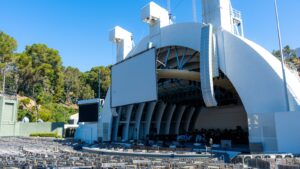 Let’s dive into the nitty-gritty of the seating arrangements at the Hollywood Hills Amphitheater. Trust me, after countless visits and many hours spent analyzing the best spots, I’ve got some insights that might just change your viewing experience.
Let’s dive into the nitty-gritty of the seating arrangements at the Hollywood Hills Amphitheater. Trust me, after countless visits and many hours spent analyzing the best spots, I’ve got some insights that might just change your viewing experience.
First off, the amphitheater features a variety of seating options. The majority of the 6,900 seats are standard bench-style seats arranged in a semi-circular pattern facing the mountain and water stage. These benches don’t have backrests, which I initially found a bit uncomfortable. However, I’ve come to appreciate how this design encourages you to lean forward and fully engage with the show.
The seating is tiered, which is a godsend for visibility. Even if you’re not in the front rows, you’ll still have a clear view of the action. I’ve sat in various sections, and I can attest that there really isn’t a bad seat in the house. However, if you’re after the best view, aim for the center sections, about halfway up the tier. This sweet spot offers a perfect vantage point for both the water effects and the mountain.
For those with accessibility needs, Disney has gone above and beyond. There are designated wheelchair spaces throughout the amphitheater, not just relegated to the back or sides. These spaces are thoughtfully integrated, allowing guests with mobility issues to enjoy the show alongside their companions. I’ve always been impressed by how seamlessly these accommodations are incorporated into the overall seating plan.
Now, let’s talk about the crème de la crème of seating – the VIP section. Located in the center of the amphitheater, these seats offer the best views and come with cushioned seats (your back will thank you). While they come at a premium, I’ve found them worth it for special occasions or if you’re a die-hard Fantasmic! fan.
For families with young children, I recommend seats closer to the aisles for easy exits if needed. Also, keep in mind that the first few rows might get a bit of splash during water scenes – a refreshing treat on hot Florida nights, but maybe not ideal if you’re dressed up.
In my experience, the best strategy for choosing seats depends on your priorities. If you’re all about the visuals, go for the center. If you love feeling the heat from the fire effects, the front rows are your best bet. And if you want a good view without the crowds, the upper tiers on the sides can be a hidden gem.
Remember, no matter where you sit, you’re in for a treat. The Hollywood Hills Amphitheater’s seating arrangement is designed to provide an optimal viewing experience from every angle. It’s just one more way Disney ensures that the magic reaches every guest.
Standing Room and Additional Space
Now, let’s talk about the unsung hero of the Hollywood Hills Amphitheater – the standing room. With space for an additional 3,000 guests, this area plays a crucial role in the venue’s impressive capacity. As someone who’s experienced the show from both seated and standing perspectives, I can tell you that the standing room offers a unique and often overlooked advantage.
The standing areas are primarily located at the rear of the amphitheater, forming a crescent shape that wraps around the seated sections. At first glance, you might think these spots are less desirable, but don’t be too quick to judge. I’ve found that the elevated position of the standing area often provides an excellent vantage point for taking in the full spectacle of the show.
One of the things I love about the standing room is the flexibility it offers. You’re not confined to a single spot, which can be a real boon if you’re trying to capture that perfect photo or video moment. I’ve managed to snag some incredible shots of the fireworks and water projections from these areas.
However, it’s important to note that standing for the duration of the show (which runs about 30 minutes) can be tiring, especially after a long day at the park. My pro tip? Wear comfortable shoes and consider bringing a small, foldable stool if you’re concerned about standing for extended periods.
Safety and comfort in the standing areas are top priorities for Disney. The spaces are clearly marked, and there are barriers to prevent overcrowding. Cast members are always on hand to ensure guests are comfortable and safe. I’ve always felt secure in these areas, even during the most crowded shows.
To maximize your experience in the standing area, I recommend arriving early to secure a spot along the front railing. This not only guarantees an unobstructed view but also gives you something to lean on during the show. If you’re with a group, consider taking turns to rest or make quick restroom breaks – the beauty of the standing area is that it’s easier to slip in and out if needed.
One of the hidden perks of the standing room that I’ve discovered over the years is the ease of exit after the show. While seated guests often have to wait for rows to clear, those in the standing area can make a quicker getaway – a real advantage if you’re trying to beat the crowds to other attractions or catch Disney transportation.
In my experience, the standing room at the Hollywood Hills Amphitheater is much more than just overflow space. It’s a vibrant part of the venue that offers a different perspective on the show. Whether you’re a spontaneous visitor who didn’t secure a seat or someone who enjoys the freedom to move around, the standing area can provide an equally magical Fantasmic! experience.
Special Features and Amenities
The Hollywood Hills Amphitheater isn’t just about its impressive capacity; it’s packed with special features and amenities that elevate the entire experience. As someone who’s spent countless evenings marveling at the technical wizardry and enjoying the little extras, I can attest that these elements are what truly set this venue apart.
Let’s start with the technical capabilities. The amphitheater is a technological marvel, boasting state-of-the-art sound, lighting, and projection systems. The audio setup is particularly impressive – I’ve never experienced a show where the sound was anything less than crystal clear, regardless of where I was seated or standing. The surround sound effect is so immersive that you truly feel like you’re part of the action.
The lighting system is equally spectacular. From subtle mood lighting to dazzling pyrotechnics, the range is incredible. I’ve always been amazed by how the lighting transforms the entire amphitheater, creating different worlds and atmospheres throughout the show.
But the real star of the show, in my opinion, is the projection system. The use of water screens and mist projections in Fantasmic! is nothing short of magical. I remember the first time I saw Mickey’s dreams come to life on those water curtains – it was a truly breathtaking moment that still gives me goosebumps.
When it comes to food and beverage options, Disney doesn’t disappoint. While you can’t bring outside food into the amphitheater, there are plenty of concession stands nearby offering a variety of snacks and drinks. My personal favorite is grabbing a Mickey pretzel and a frozen lemonade before the show – there’s something about that combination that just screams Disney night out to me.
For those looking for merchandise and souvenirs, you’re in luck. The amphitheater area is surrounded by shops selling Fantasmic! and general Disney merchandise. I’ve built quite a collection of show-specific items over the years, from t-shirts to light-up Mickey ears. These make for great mementos and are perfect for getting into the spirit of the show.
One of the lesser-known amenities that I’ve come to appreciate is the availability of rental cushions. Given that most of the seating is bench-style, these cushions can make a big difference in comfort, especially if you’re settling in for multiple shows or have back issues.
Another feature that I find particularly thoughtful is the provision of assisted listening devices for guests with hearing impairments. It’s touches like these that showcase Disney’s commitment to ensuring everyone can fully enjoy the experience.
Lastly, I can’t talk about the amphitheater’s features without mentioning the stunning backdrop it provides for photos. Whether it’s a shot of the mountain during the day or the illuminated venue at night, it’s a photographer’s dream. I’ve captured some of my favorite Disney memories against this backdrop.
In my experience, it’s these special features and amenities that transform a simple show into an unforgettable experience. The Hollywood Hills Amphitheater doesn’t just host a spectacular show; it creates an entire evening of magic, comfort, and wonder.
Technical Capabilities
As someone who’s been dazzled by the Hollywood Hills Amphitheater’s technical prowess time and time again, I can confidently say that this venue is at the cutting edge of entertainment technology. The technical capabilities here aren’t just impressive; they’re absolutely mind-blowing.
Let’s start with the sound system. The amphitheater boasts a state-of-the-art audio setup that would make any audiophile swoon. We’re talking about a multi-channel surround sound system that envelops you in a cocoon of crystal-clear audio. I’ve sat in various spots throughout the venue, and the sound quality is consistently excellent. The system is so well-tuned that you can hear every whisper, every musical note, and every sound effect with perfect clarity, regardless of where you’re seated.
The lighting system is equally impressive. It’s a sophisticated network of intelligent lights, LED arrays, and traditional stage lighting that works in perfect harmony. I’ve been amazed by how the lighting designers use this system to create everything from subtle mood changes to explosive bursts of color. The way they paint the mountain and water with light is nothing short of artistry.
But the real showstopper, in my opinion, is the projection system. The Hollywood Hills Amphitheater utilizes cutting-edge projection mapping technology that turns the mountain, water screens, and even mist into dynamic canvases. I remember the first time I saw the mountain transform into a massive projection surface – it was like watching a 50-foot-tall TV come to life. The clarity and brightness of these projections, even on water and mist, is astounding.
Recent upgrades have only enhanced these capabilities. Disney has invested in laser projection technology, which has taken the visual quality to a whole new level. The colors are more vibrant, the images sharper, and the overall effect more immersive than ever before. I noticed the difference immediately – it’s like someone turned up the ‘wow’ factor to eleven.
The special effects systems are equally impressive. From massive flame effects that you can feel the heat from, to intricate water fountains and jets, to stunning pyrotechnics, the range of effects is staggering. I’m always amazed by how seamlessly these effects are integrated into the show. They never feel gimmicky or out of place; instead, they enhance the storytelling in a way that feels natural and magical.
One of the most innovative features I’ve seen is the use of floating set pieces and characters on the water. The engineering behind these is remarkable – they move with such fluidity and precision that you almost forget they’re mechanical.
What really sets the Hollywood Hills Amphitheater apart, in my experience, is how all these technical elements work together in perfect synchronization. It’s not just about having the latest gadgets; it’s about using them in a way that creates a cohesive, immersive experience. The technical team behind the scenes is the unsung hero, orchestrating this complex symphony of technology to create Disney magic night after night.
As someone who’s seen a lot of shows and worked with various venues, I can say with confidence that the technical capabilities of the Hollywood Hills Amphitheater are truly in a league of their own. It’s not just a backdrop for a show; it’s an active participant in creating an unforgettable experience.
Visitor Tips and Recommendations
After countless visits to the Hollywood Hills Amphitheater, I’ve picked up a few tricks that can make your experience truly magical. Let me share some insider tips that I wish someone had told me before my first visit.
First and foremost, timing is everything. I can’t stress enough how important it is to arrive early, especially if you’re aiming for a seated spot. On busy days, I’ve seen the amphitheater fill up an hour before showtime. My recommendation? Get there at least 90 minutes early. This not only ensures you get a good spot but also allows you to soak in the pre-show atmosphere, which is an experience in itself.
If you’re visiting with young children, I’ve found that seats near the aisle are a lifesaver. It makes it easier to take quick bathroom breaks or step out if the little ones get overwhelmed. Also, consider bringing a light blanket or cushion for the bench seats – your back will thank you later.
For those who don’t mind getting a little wet, the first few rows can be a blast. You might catch some spray during the water scenes, which can be refreshing on a hot Florida night. However, if you’re carrying electronics or prefer to stay dry, opt for seats further back.
If you’re a photography enthusiast like me, the center sections about halfway up offer the best vantage point for capturing the entire show. However, remember that flash photography isn’t allowed, so brush up on your low-light shooting skills.
During peak times, especially holidays and summer weekends, I highly recommend taking advantage of Disney’s FastPass+ system if it’s available for Fantasmic!. It can save you hours of waiting and guarantee a good viewing spot.
For those attending during the hotter months (which, let’s face it, is most of the year in Florida), stay hydrated. While you can’t bring outside food and drinks into the amphitheater, there are water fountains nearby. I always bring a refillable water bottle to use before entering.
If you’re prone to sensory overload, be prepared for loud noises and bright lights. The show is a sensory spectacle, which is fantastic but can be overwhelming for some. Seats towards the back or sides can offer a slightly less intense experience.
One of my favorite tips for repeat visitors is to try viewing the show from different vantage points. The experience can vary significantly depending on where you’re seated or standing. I’ve discovered new details and perspectives each time I’ve changed my viewing location.
Lastly, don’t rush out as soon as the show ends. The crowd can be overwhelming, and you might miss out on some post-show magic. I love lingering for a few minutes to watch the mountain and water features return to their serene state – it’s a beautiful transition that many people miss.
Remember, the key to enjoying the Hollywood Hills Amphitheater is to come prepared but stay flexible. Even if things don’t go exactly as planned, the magic of the venue and the show itself has a way of making every visit special. Trust me, I’ve never left disappointed, regardless of where I ended up watching from.
A Gateway to Unforgettable Experiences
The Hollywood Hills Amphitheater isn’t just a venue; it’s a gateway to unforgettable Disney magic. Its impressive capacity of 9,900 guests, including 6,900 seated and 3,000 standing, creates an electrifying atmosphere that enhances every performance. The thoughtful seating arrangements, state-of-the-art technical capabilities, and array of amenities all contribute to an experience that goes beyond mere entertainment.
From the stunning visual effects projected on water screens to the immersive surround sound, every aspect of the amphitheater is designed to transport you into a world of wonder. Whether you’re a first-time visitor or a seasoned Disney fan, the venue offers something new to discover with each visit.
After experiencing the magic of the Hollywood Hills Amphitheater, you might find yourself wanting to explore more of what the area has to offer. If you’re looking to extend your Hollywood experience beyond the theme park, consider checking out some of the Hollywood Hills restaurants with a view. These dining spots offer not just great food but also breathtaking vistas of the city, providing a perfect end to your magical day.
For those interested in combining entertainment with a bit of education and stargazing, a visit to the Hollywood Hills Griffith Observatory is a must. It’s a fantastic way to cap off your Hollywood adventure, offering stunning views of Los Angeles and the cosmos above.
If you’re planning an extended stay in the area, you might want to look into Hollywood Hills for rent options. Staying in the heart of Hollywood can add an extra layer of excitement to your trip, allowing you to fully immerse yourself in the glitz and glamour of the entertainment capital.
For those seeking a unique outdoor experience, consider trying Hollywood Hills horseback riding. It’s a fantastic way to see the natural beauty of the area and get a different perspective on the famous Hollywood sign.
Remember, the magic of the Hollywood Hills Amphitheater isn’t just in its capacity or features – it’s in how you experience it. Arrive early, choose your spot wisely, and immerse yourself in the spectacle. After all, in this amphitheater, every seat tells

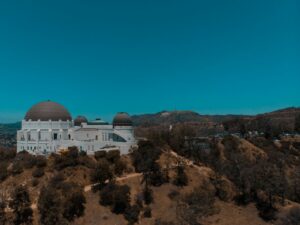 As we look to the future, Griffith Observatory continues to evolve and adapt to meet the changing needs of its visitors and the scientific community. Plans are underway for new exhibits that will incorporate the latest discoveries in astronomy and space exploration.
As we look to the future, Griffith Observatory continues to evolve and adapt to meet the changing needs of its visitors and the scientific community. Plans are underway for new exhibits that will incorporate the latest discoveries in astronomy and space exploration.
 One of the most significant developments in recent history was the establishment of Hollywood Classic Vineyard in 2001. The York family, recognizing the untapped potential of the area, planted vines on virgin land adjacent to Griffith Park. This bold move marked a new chapter in Hollywood Hills viticulture, demonstrating that high-quality wines could still be produced in this urban environment.
One of the most significant developments in recent history was the establishment of Hollywood Classic Vineyard in 2001. The York family, recognizing the untapped potential of the area, planted vines on virgin land adjacent to Griffith Park. This bold move marked a new chapter in Hollywood Hills viticulture, demonstrating that high-quality wines could still be produced in this urban environment.
 Leveraging Self-Service Options
Leveraging Self-Service Options



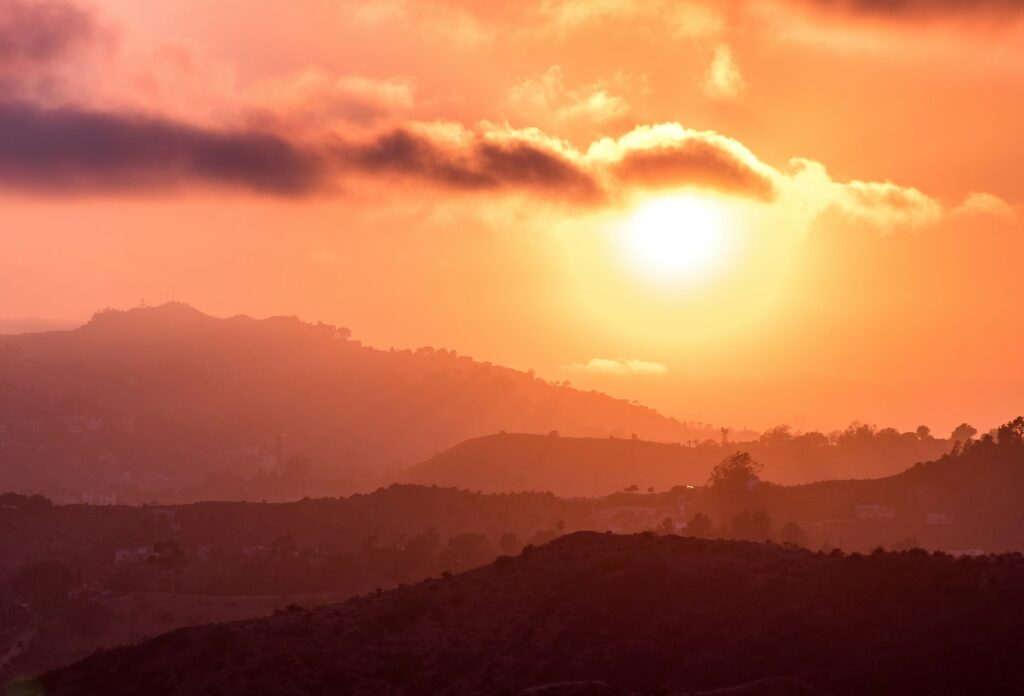



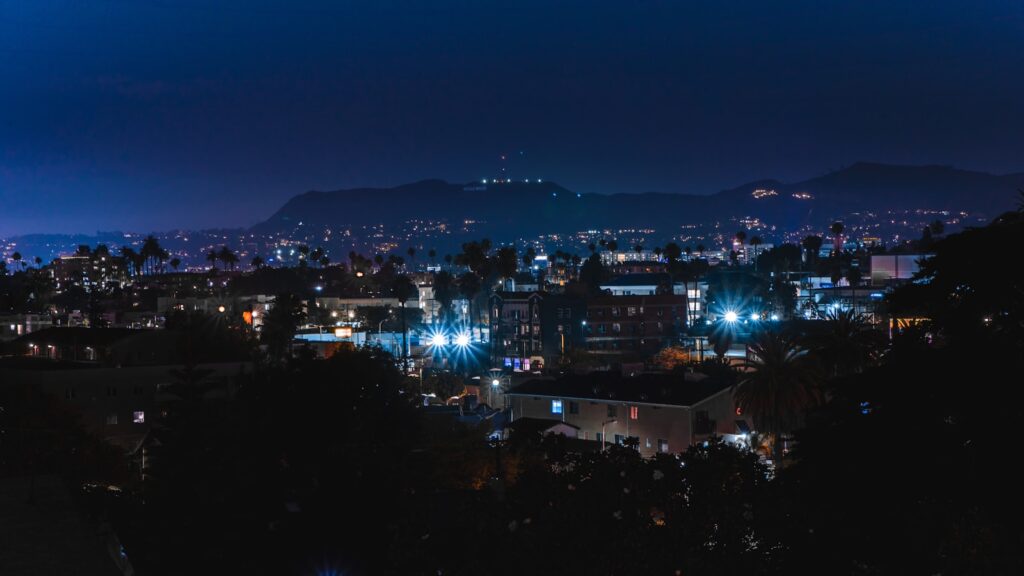 As a long-time resident of Los Angeles and a real estate professional specializing in luxury properties in Southern California, I’ve had my fair share of breathtaking moments. But nothing quite compares to the enchanting Hollywood Hills night view. It’s a sight that never fails to leave me in awe, no matter how many times I’ve witnessed it. Let me take you on a journey through this dazzling nocturnal landscape that has captured the hearts of locals and tourists alike.
As a long-time resident of Los Angeles and a real estate professional specializing in luxury properties in Southern California, I’ve had my fair share of breathtaking moments. But nothing quite compares to the enchanting Hollywood Hills night view. It’s a sight that never fails to leave me in awe, no matter how many times I’ve witnessed it. Let me take you on a journey through this dazzling nocturnal landscape that has captured the hearts of locals and tourists alike.
